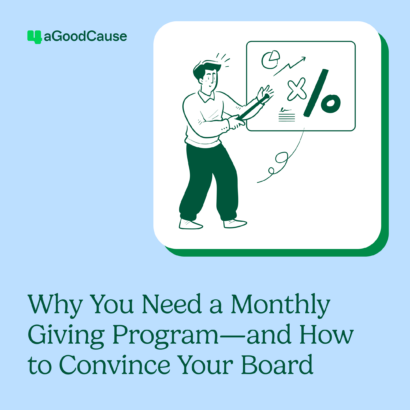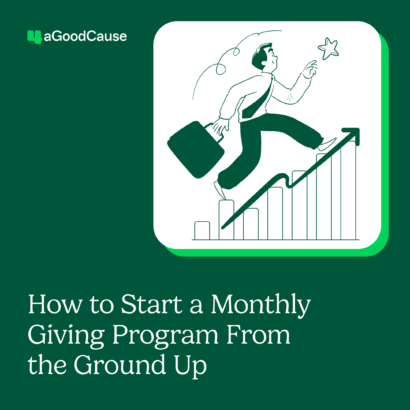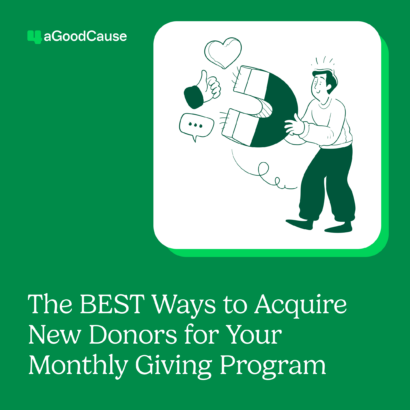As you know, online fundraising holds a wealth of potential for your nonprofit. But maybe you aren’t sure how to transform those leads into actual donations. There are actually key times of year and important strategies nonprofits should be enlisting in order to benefit from online fundraising. One such strategy is year-end email fundraising. Enter nonprofit expert Jeremy Koch with a few words of advice.
Koch began his career as a teacher, then joined the Peace Corps, later working for international nonprofit organizations as a consultant. Out of these experiences, he founded Empower Nonprofits, with an aim “to give nonprofit marketers and fundraisers access to the knowledge they need to expand their reach, increase their fundraising and achieve greater impact.”
We spoke with Koch recently about the ways nonprofits can and should be using year-end emails for fundraising and how to make these campaigns even more effective.
What elements go into a great fundraising email?
A great fundraising email is always about helping the reader establish an emotional connection with your beneficiaries. It should never be about your organization and your need for money.
Instead, use emotional storytelling to help your reader feel connected to your beneficiaries and then offer up a single compelling call-to-action at the height of this emotion that gives them the opportunity to take action.
If you do these things well then you will have successful email campaigns.
What role do images or other visuals play in year-end fundraising emails?
When writing email messages, we often focus only on all the words we feel we need to say. But from your readers perspective, an email full of block paragraphs is intimidating. They skim it at best, missing most of the words you fraught over anyway. This is where visuals come to the rescue.
They help you reduce the number of words you need to say because the right pictures can say it all with any words and they can help break up your text so that it doesn’t appear intimidating.
Visuals also help create that emotional connection between your reader and your work. Some of the most powerful images are pictures focusing on a single person, showing genuine emotion, looking directly into the camera.
What goes into writing a subject line for a fundraising email? How long should it be?
Normally, it’s more important to focus on the content of your email than the content of your nonprofit email subject line, but at the end of the year you’re fighting for attention in a crowded inbox, so you will benefit from putting more time and thought into your subject line.
The best subject lines are ones that grab attention. It doesn’t really matter how you do it, it only matters that you do it. In fact, you should try to do it as many different ways as possible. After all, it’s no longer surprising if you keep doing the same thing over and over again.
Keep them short, but catchy. Ask a question or start a surprising sentence that ends with an ellipsis so they have to open the email to see what you’re going to say.
You can also add emojis to your subject line now. Visuals always catch the eye so definitely give this a try.
No matter what you do, make sure that the content of the email follows through on the promise of your subject line and always deliver quality content.
What should nonprofits avoid putting in these emails?
Don’t say “We need money!” People don’t give because you need money. They give because they want to take an action in support of your beneficiaries. It’s not about you and your needs. It is about connecting your readers to your beneficiaries.
Don’t put too many pictures. Too many pictures can make an email look cluttered and people will often choose to just look at all the pictures instead of reading your words. Use pictures to serve your text. Never let images dominate the email. 99.9% of the time one or two great images is all you need.
Don’t write 2,000 words. If you have 2,000 words and you think the reader needs to have them all, then do everyone a favor and break it into multiple email messages. Long emails don’t get read, they get deleted.
Related to the above. If you’re writing long email messages you’re probably trying to convey too many messages. Every email should have only one clear message. Don’t try to do it all in one email. Instead send more email messages, each with a very specific purpose and message.
Don’t give them options. This is a quick win for nonprofits I work with. Nonprofits often include links to their Facebook page, Twitter profile, YouTube site, their website, their donation page, ad nauseum, in the same email. Stop the madness! Don’t give your readers options. Give them one clear strong compelling emotional message that is directly tied to ONLY ONE call-to-action. You’ll be amazed at what this does for your response rates.
Are there differences between regular fundraising emails sent throughout the year and year-end emails?
I sure don’t think so. Most nonprofits approach end-of-year fundraising differently, with more urgency, and more frequency, but what works at the end of the year also work all year long. Nonprofits should be using email throughout the year to cultivate relationships and be good stewards of their donors. If they do these things year-round then subscribers won’t be suddenly inundated with email messages from a nonprofit their barely remember.
How often should a nonprofit be sending year-end emails?
For most nonprofits, the answer is way more often than you think. But, there are lots of different strategies for this. So how you execute will vary depending on a few factors such as how much quality content can you create? How engaged are your readers? What is the expectation you have established with your email list? All these things factor in. But one of my favorite strategies is to send emails in bursts. Very few organizations use this technique but it is much more effective than bi-monthly email blasts.
Here’s how it works: tell one powerful story over two email messages and send those emails one a day for two days in a row. You can do this a couple of times in November and every week in December IF you have great stories to tell and are able to tell them really well.
Nonprofits are often scared that emailing more often will result in losing people on their list. This is only true if you’re not telling great stories and providing high-quality content.
As long as the stories are emotional and engaging people will read them.
When should they be sent (what month, how early is too early)?
Email fundraising should be a year-long strategy. The only thing that changes are the themes involved (e.g., holidays), stories you tell, and the call-to-action at the end.
What tools or strategies do you suggest nonprofits use to ensure these emails are opened and read?
You have to earn the attention of your audience. It is not owed to you because you do good work. The nonprofits that take this idea seriously have the best open rates and the most loyal subscribers. Why? Because their email messages are intended to serve the reader, not the nonprofit. If you do this consistently, your readers will open every email because they like what they learn and they like the emotional connection you give them to your work.
Subject lines are important when competing for the crowded inbox at the end of the year, but consistent quality content will win the day in the long-run.
Where should the email direct the donor to? What action item should be included?
This is a great question and highlights a mistake a lot of nonprofits make with email marketing.
I mentioned this above, but the answer to this question is determined by the purpose of the email message. If the purpose of the email message is to increase Facebook likes then that should be the only call-to-action and it should take them to your Facebook page.
If the purpose is to increase twitter followers then that should be the only call-to-action and it should take them to your twitter page.
If the purpose is to solicit donations then that should be the only call-to-action and that should take you directly to the donation page.
The mistake nonprofits make is giving their readers options to do all of the above in a single email. Determine the purpose of your email and then focus your entire email to achieve that one objective.
A good strategy for any campaign is to focus first on increasing social media followers and email subscribers to expand the overall size of your audience. Then shift your focus to donations after you’ve expanded your net.
Maybe a nonprofit has sent year-end emails in the past but hasn’t seen the results they would like. What would you suggest they try? What might a few possible problems be?
The nonprofits that tell me emails never work for them are making at least a few of the following mistakes:
- Making their organization the focus of the email. Instead, the focus should be on the reader and their connection to the beneficiaries you serve.
- Not emailing enough. If people subscribe but then don’t hear from you immediately or even in the next 3-6 weeks then they forget all about you and why they cared in the first place. You have to email them immediately after they subscribe by using an automated email welcome series. And then make sure you email regularly.
- Not automating their email marketing. You can send more timely and relevant emails with email marketing automation. This is probably the biggest thing you can do to make email marketing work for you.



